
Perdita is a large genus of small bees native to North America, particularly diverse in the desert regions of the United States and Mexico. There are over 600 currently recognized species of Perdita, plus more than 100 additional subspecies and many more species that remain undescribed. Perdita are usually quite small and often brightly colored with metallic reflections and/or yellow or white markings, and among the few lineages of bees incapable of stinging. The genus was extensively treated by P.H. Timberlake who, in addition to T.D.A. Cockerell, described most of the known species. Most species are extreme specialists (oligoleges) with respect to pollen and will only collect pollen from a few closely related species or genera of plants. Many species in this genus are called fairy bees.
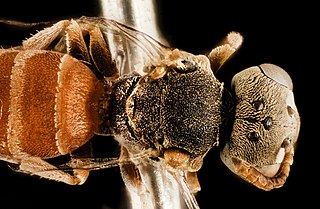
Neolarra vigilans is a kleptoparasitic species of cuckoo bee in the family Apidae. It is found from northern Mexico to southern Canada.

Neolarra is a genus of cuckoo bees in the family Apidae. There are about 16 described species in Neolarra, all from North America. These bees are smaller than a grain of rice and are kleptoparasites of Perdita bees.

Triepeolus verbesinae is a species of cuckoo bee in the family Apidae. It is found in the United States and Mexico.
The red-faced miner bee is a species of miner bee in the family Andrenidae. It is found in North America.
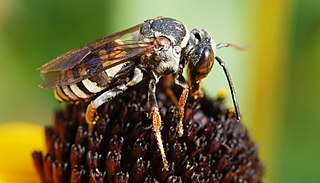
Triepeolus lunatus is a species of cuckoo bee in the family Apidae. It is found in North America from Canada to northern Mexico. Triepeolus lunatus tends to live in forest edges and meadows.
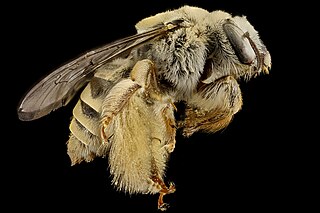
Diadasia rinconis is a species of chimney bee in the family Apidae. It is found in Central America and North America. In the Sonoran Desert, D. rinconis is considered the "cactus bee" as it feeds almost exclusively on a number of Sonoran Desert cactus species, its life cycle revolving around the flowering of the native species of cacti.
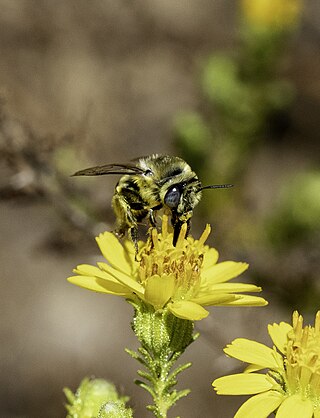
Anthophora urbana is a species of anthophorine bee in the family Apidae. It is found in Central America and North America.

The aster miner bee is a species of miner bee in the family Andrenidae. It is found in North America.
The brown-tailed miner bee is a species of miner bee in the family Andrenidae. Another common name for this species the dark-tailed andrena. It is found in North America.
The Piper's miner bee is a species of miner bee in the family Andrenidae. It is found in Central America and North America.

Melissodes comptoides, the brown-winged long-horned bee, is a species of long-horned bee in the family Apidae. It is found in North America.

The eastern willow miner bee is a species of miner bee in the family Andrenidae. It is found in North America.
Protodufourea is a genus of sweat bees in the family Halictidae. There are about five described species in Protodufourea.
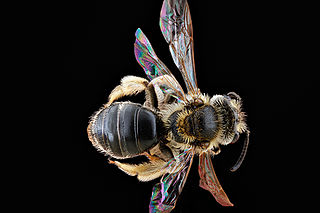
The imitator miner bee is a species of miner bee in the family Andrenidae. It is found in North America.
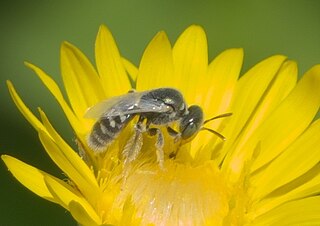
The shiny green miner bee is a species of miner bee in the family Andrenidae. Another common name for this species is the white-winged perdita. It is found in Central America and North America.

Svastra obliqua, the sunflower bee, is a species of long-horned bee in the family Apidae. It is found in Central America and North America.
The streaked miner bee is a species of miner bee in the family Andrenidae. It is found in North America.
The small miner bee is a species of miner bee in the family Andrenidae. It is found in North America.

The Bradley's miner bee is a species of miner bee in the family Andrenidae. Another common name for this species is Bradley's andrena. It is found in North America.














